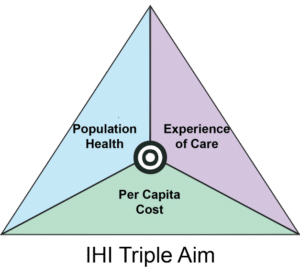 In the healthcare industry, the focus over the last few years has been on quality and patient experience in healthcare. This is part of the Triple Aim concept initiated by the Institute for Healthcare Improvement that aims to:
In the healthcare industry, the focus over the last few years has been on quality and patient experience in healthcare. This is part of the Triple Aim concept initiated by the Institute for Healthcare Improvement that aims to:
- reduce the cost per capita of healthcare in our country,
- improve population health and
- improve the Patient Experience of care.
Part of my position is to oversee the quality of care that patients receive at Windom Area Health. We do this by looking at 6 different aims:
- Safe: Avoiding harm to patients from the care that is intended to help them.
- Effective: Providing services based on scientific knowledge to all who could benefit and refraining from providing services to those not likely to benefit (avoiding underuse and misuse, respectively).
- Patient-centered: Providing care that is respectful of and responsive to individual patient preferences, needs, and values and ensuring that patient values guide all clinical decisions.
- Timely: Reducing waits and, sometimes harmful, delays for both those who receive and those who give care.
- Efficient: Avoiding waste, including waste of equipment, supplies, ideas, and energy.
- Equitable: Providing care that does not vary in quality because of personal characteristics such as gender, ethnicity, geographic location, and socioeconomic status.
Windom Area Health has been working toward these goals and the information the follows describes some of the measures we use to determine our success
- There are specific “measures” that government entities set as goals as to how certain conditions are treated, based on best practices that are developed by experts in those areas. Some of these measures also help to increase the safety of our patients too. For example, for inpatients, the time it takes to admit a patient from the Emergency Department is measured on an ongoing basis against a set standard.
- Other examples of measures we are required to track in the Emergency Department are treatment of patients that present with chest pain, heart attacks, and strokes. We also look at the total time that patients spend in the Emergency Room.
The Department of Health of the State of Minnesota also certifies the Emergency Room for Trauma Designation and Stroke Ready Designation. They do this by overseeing our programs and making sure that we are treating patients in a timely manner and with the right medications and treatments.
Another way we measure our success in the area of patient experience is through surveys that are sent to our patients, which gather information on how we are doing with patient-centered care. All comments are taken into consideration in how we can improve and staff are recognized for “going above and beyond” for patients. We look forward to hearing suggestions from our patients on how we can improve. Here at Windom Area Health, we also have a volunteer Patient & Family Advisory Council that assists us by assessing our services and providing input from a fresh perspective
Each department in the hospital works on a Performance Improvement project every year, mostly directed toward avoiding waste of equipment, supplies, ideas and energy. For example, our IT department has been working on reducing printing and paper costs.
There are websites that show the results of our hospital’s quality and safety score which can be compared with other hospitals. This can be found at: https://www.medicare.gov/hospitalcompare/search.html
Blog Written By: Lois Anderson, Performance Improvement and Risk Management Coordinator
